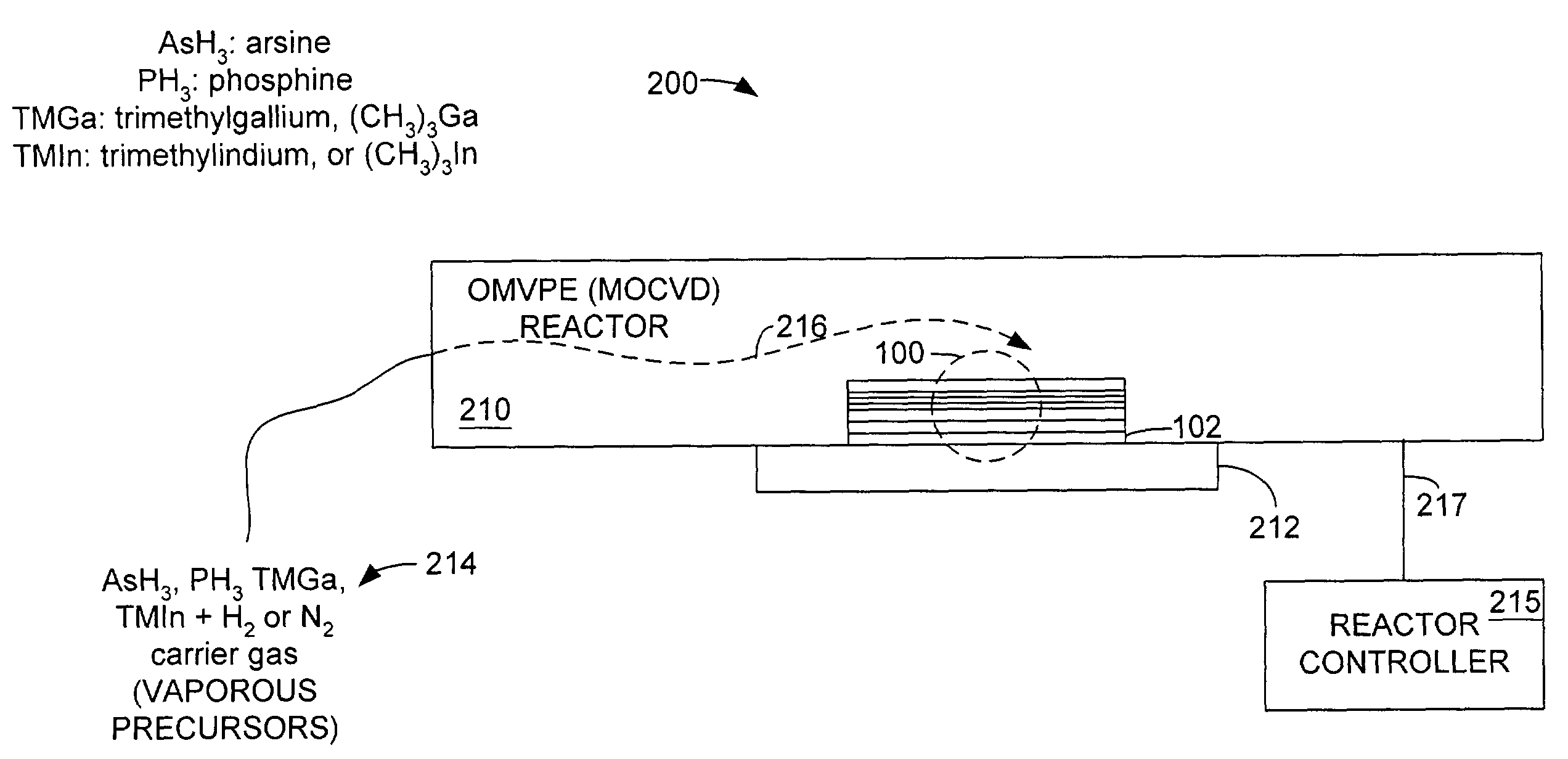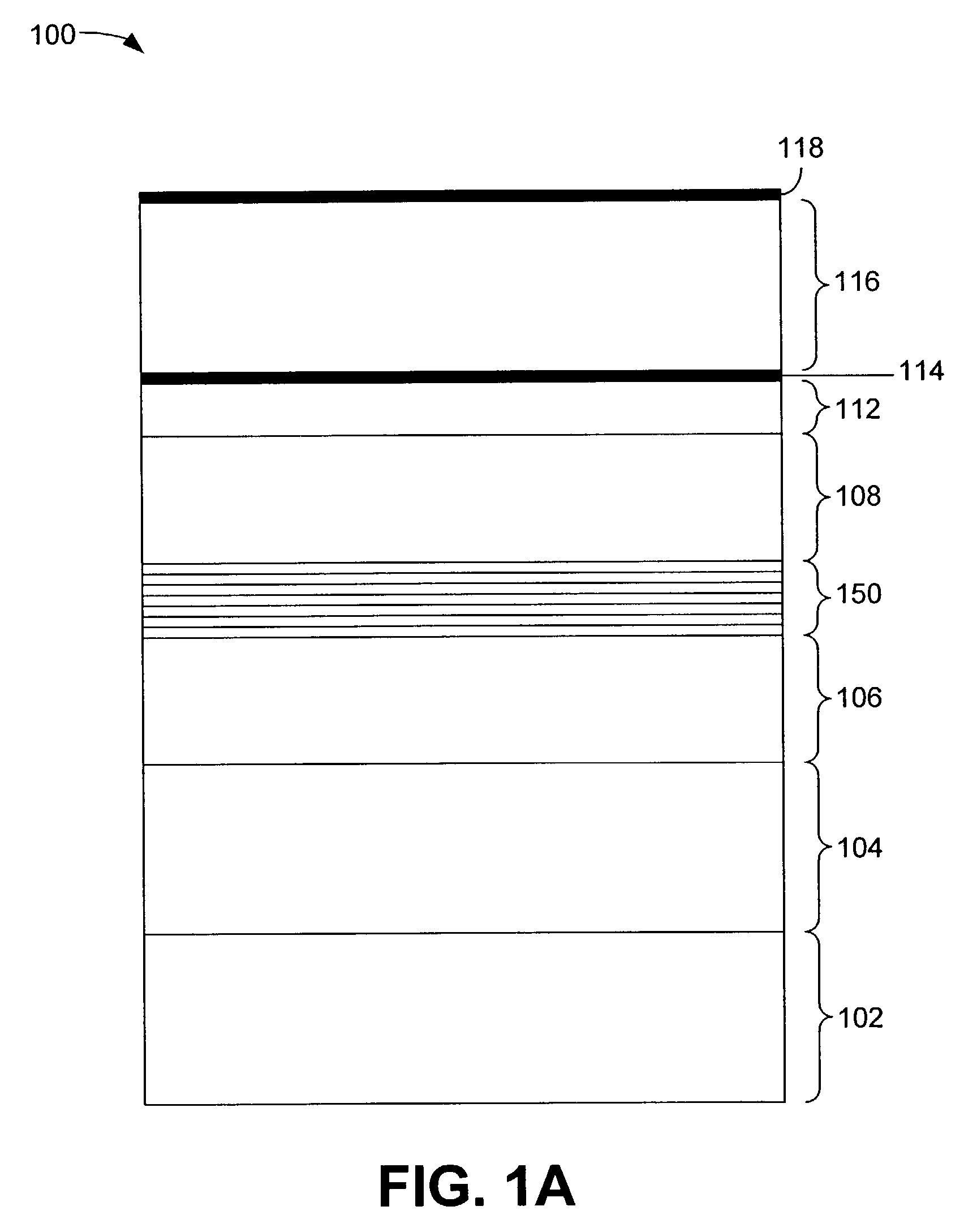Long wavelength indium arsenide phosphide (InAsP) quantum well active region and method for producing same
- Summary
- Abstract
- Description
- Claims
- Application Information
AI Technical Summary
Benefits of technology
Problems solved by technology
Method used
Image
Examples
Embodiment Construction
[0020]While described below using an example of an edge emitting laser that incorporates InAsP quantum well layers, other device structures can benefit from the invention. For example, a vertical-cavity surface-emitting laser (VCSEL) including high quality InAsP quantum well epitaxial layers can be economically fabricated using the concepts of the invention.
[0021]FIG. 1A is a schematic view illustrating the relevant portions of an exemplary edge emitting laser 100 constructed in accordance with an aspect of the invention. Some of the elements of the laser 100 are omitted for simplicity. The laser 100 comprises an N-type, sulfur (S) doped, indium phosphide (InP) substrate 102 over which an n-type 2 μm thick, selenium (Se) doped, InP cladding layer 104 is formed. The cladding layer 104 is formed using a high bandgap, low refractive index material.
[0022]A lower separate confinement heterostructure (SCH) layer 106 is formed over the cladding layer 104. The lower SCH layer 106 is prefera...
PUM
 Login to View More
Login to View More Abstract
Description
Claims
Application Information
 Login to View More
Login to View More - R&D
- Intellectual Property
- Life Sciences
- Materials
- Tech Scout
- Unparalleled Data Quality
- Higher Quality Content
- 60% Fewer Hallucinations
Browse by: Latest US Patents, China's latest patents, Technical Efficacy Thesaurus, Application Domain, Technology Topic, Popular Technical Reports.
© 2025 PatSnap. All rights reserved.Legal|Privacy policy|Modern Slavery Act Transparency Statement|Sitemap|About US| Contact US: help@patsnap.com



